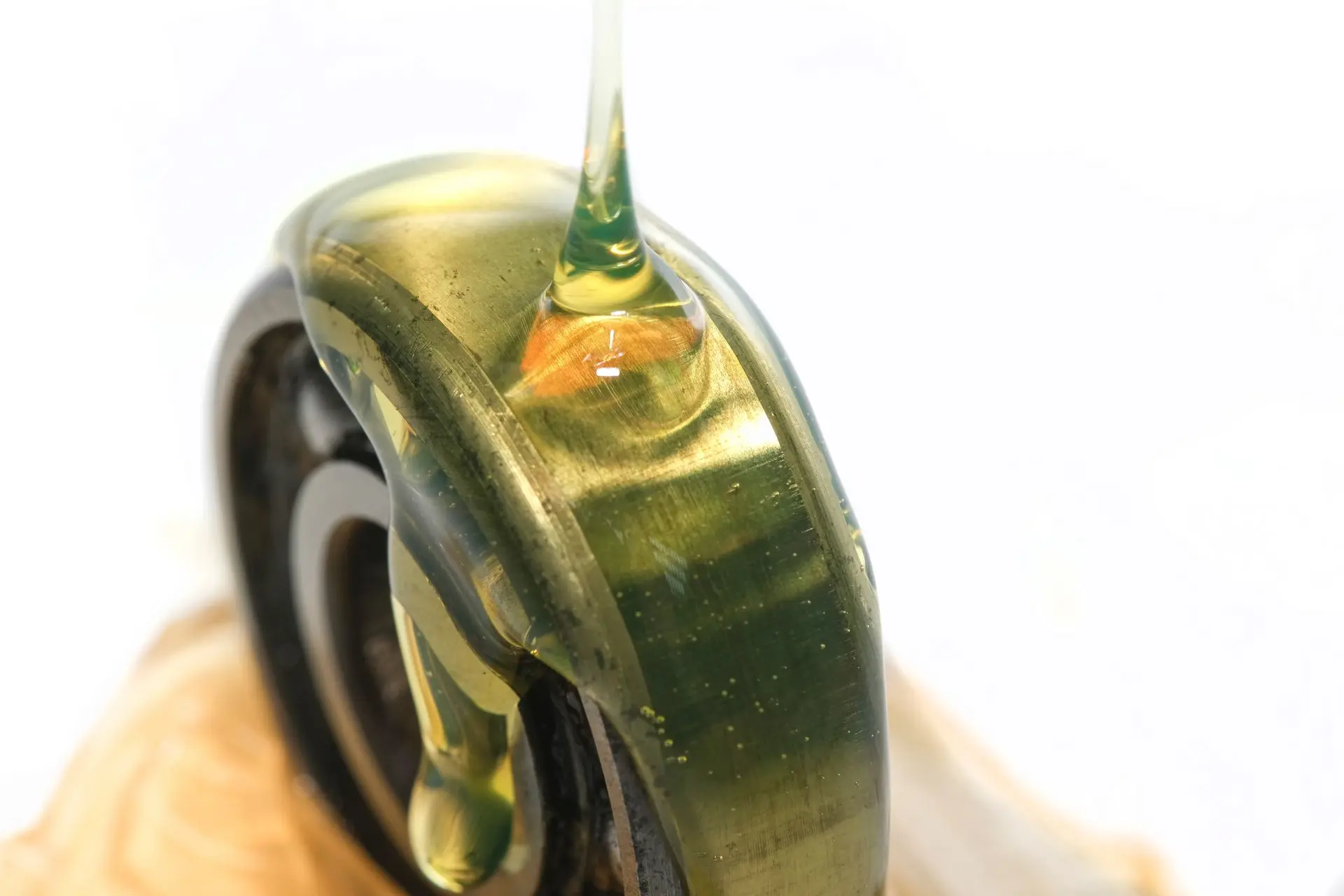What is the thickener in lubricating greases and why is it key to the reliability of your operation?
Sometimes in maintenance, it is believed that grease "is just grease." But in chemical, automotive, food, or even aerospace operations, the real enemy is hidden: the inadequate thickener.
While the primary lubricating function lies with the base oil, it is dangerous to overlook the importance of the thickener.
Imagine a bearing in a chemical plant exposed to chlorine. A food oven with constant washdowns. A rocket in extreme vacuum conditions. In each case, it may not be the base oil that fails first... but the thickener.
What is the thickener in a lubricating grease?
It is not an additive or a simple "filler." It is, literally, the backbone of fat..
The National Lubricating Grease Institute (NLGI) explains it this way: thickeners are molecules, polymers, or particles that are partially soluble in the lubricant, giving it that characteristic semi-solid consistency.
Wayne Mackwood, in an article for the STLE magazine, adds a key point: the thickener acts as the network that gels the grease and, depending on the formulation, can represent between 3% and 35% of its volume.
In short, the thickener is the internal architecture that determines how your grease will perform; therefore, the limits within which it can operate. It defines whether it will withstand heat, water, aggressive chemicals, or extreme loads.

Why is it key to the reliability of your operation?
The choice of thickener type determines fundamental characteristics of the grease's performance, especially regarding its thermal stability and environmental resistance.
But let's see how it influences:
The thickener in heat resistance
To understand how the thickener influences heat resistance, it is worth looking at an experiment conducted by the Society of Tribologists and Lubrication Engineers (STLE) with food-grade greases.
The design was simple: place different greases in an oven and observe how they behaved. Seventeen commercial food-grade greases (NLGI 1 and 2, NSF-H1 certified) made with petroleum, PAO, and vegetable base oils were tested, with thickeners such as aluminum complex, PTFE, silica, and calcium sulfonates. In parallel, a synthetic ester grease was prepared.
The test:
- 2 grams of each fat in aluminum trays.
- 20 hours in the oven, starting at 204 °C (400 °F).
After each round: the structure, evaporation, and deposited varnish were evaluated.
The key findings:
A 288 °C (550 °F, 4 horas)
Commercial fats ended up with thick skins and losses of up to 29%.
Synthetic ester fat still maintained integrity, with only 7% loss and minimal deposits.
A 260 °C (500 °F)
All commercial fats exhibited oil bleeding.
The synthetic ester fat still maintained good structure, without a surface film.
A 232 °C (450 °F)
Almost all commercial fats showed surface film or structural collapse. Evaporation of up to 55%.
The synthetic ester fat remained intact, with only 2% evaporation.
A 204 °C (400 °F)
More than half of the commercial fats failed, losing their structure despite many claiming to withstand temperatures up to 260 °C (500 °F). Some experienced a 44% evaporation rate and left visible residue.
The synthetic ester fat maintained perfect structure, with less than 1% loss and no residues.
The conclusion: the difference was not only marked by the base oil, but by the synergy with the thickener. The thickener acts as the "internal architecture" that supports the grease when the heat is on. And if that architecture collapses, the base oil alone cannot maintain the lubricating film.
How to choose the right thickener?
Now that we understand the role of the thickener as the "internal architecture" of grease, it is worth taking a quick look at how the most common ones behave against heat, water, chemicals, or extreme loads.
The following table is not intended to be an absolute truth, but rather a quick guide to compare thickeners and their typical properties. In practice, each application has its particularities, and that is where the experience of a specialist can make a difference: choosing the right thickener not only prevents failures but also ensures that your operation maintains the reliability it needs.

Thickener Guide
This table is a comparative summary created from information published by NLGI, STLE TLT, and reference texts such as Totten (2006). Its purpose is to serve as a quick guide. In practice, each application requires a more detailed evaluation.
What comes next?...
This is not about choosing a "more expensive" lubricant, but rather the one that meets the real challenge of your application. Do you want to delve into which thickener is ideal for your critical application? Let's discuss your operating conditions: temperature, environment, and loads.
Remember that the hero is not the product. It is you who ensures the continuity of the plant with every well-informed purchasing decision.
"In practice, each application has its own particularities, and that's where the experience of a specialist can make a difference."
Frequently Asked Questions
In this section, you will find the answers to frequently asked questions.
The thickener is the internal architecture that determines how your fat will function; therefore, the limits within which it can operate.
Because it determines the fundamental characteristics of fat performance, especially regarding its thermal stability and environmental resistance.
In practice, each application has its own particularities, and that is where the experience of a specialist can make a difference: choosing the right thickener not only prevents failures but also ensures that your operation maintains the reliability it needs.

Sources:
National Lubricating Grease Institute. (s. f.). What is the thickener in lubricating grease? Recuperado de https://www.nlgi.org/faqs/what-is-the-thickener-in-lubricating-grease/#:~:text=El%20espesante%20de%20una%20grasa,le%20confieren%20una%20consistencia%20semis%C3%B3lida.
Mackwood, W. (2015, 5 de agosto). Calcium Sulfonate Complex Greases [Webinar]. STLE University/TLT Webinars. STLE. Recuperado de https://www.stle.org/files/TLTArchives/2016/10_October/Webinars.aspx
Housel, T. (año). High Temperature Food Grade Grease – Synthetic Esters. Society of Tribologists and Lubrication Engineers. https://www.stle.org/Shared_Content/End_Users/Synthetics/Food_Grade_Articles_FULL/High_Temp_Food_Grade_Grease_Synthetic_Esters.aspx
Totten, G. E. (2006). Handbook of Lubrication and Tribology: Volume II: Theory and Design. CRC Press.